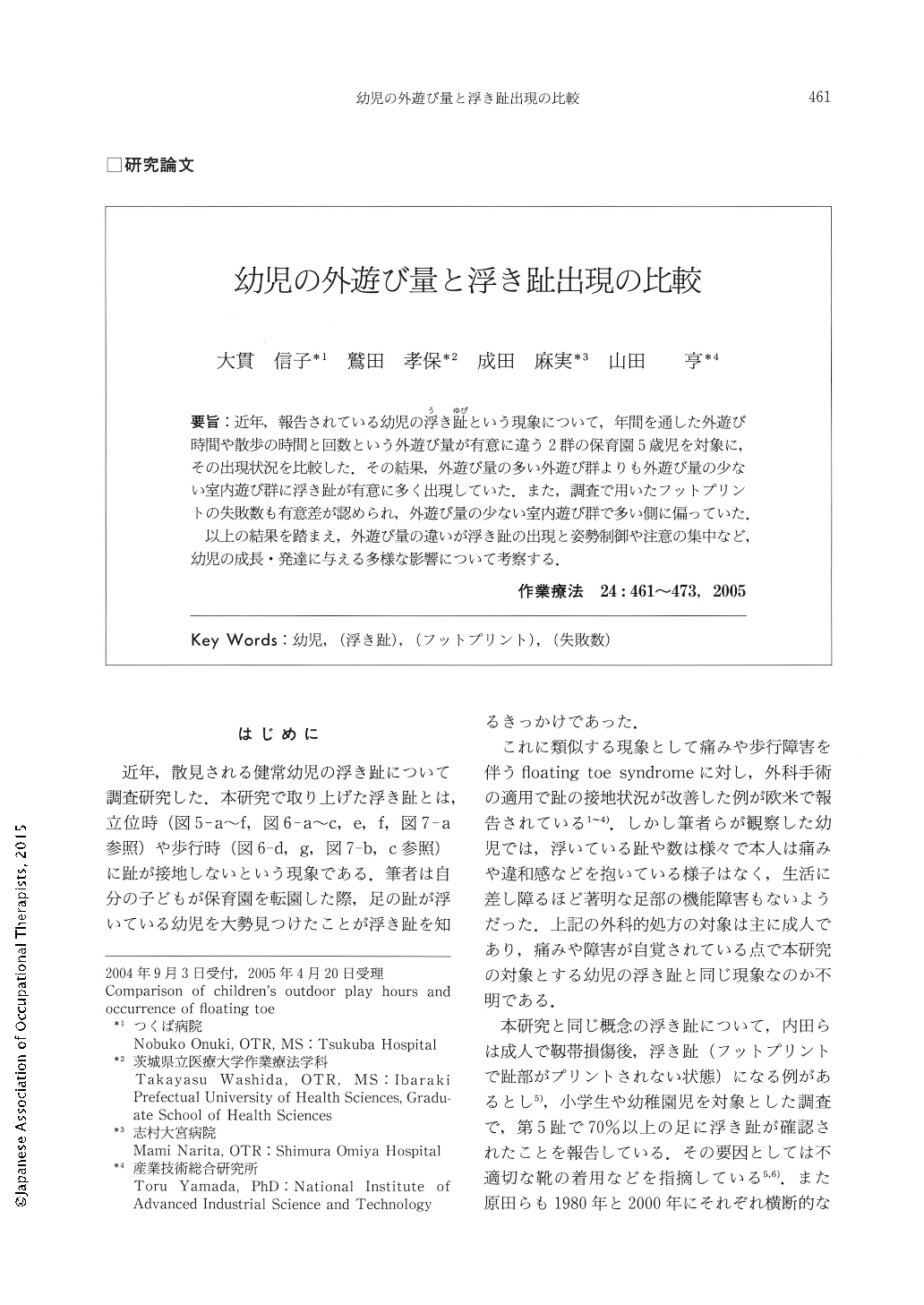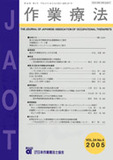Japanese
English
- 販売していません
- Abstract 文献概要
- 1ページ目 Look Inside
- 参考文献 Reference
- サイト内被引用 Cited by
要旨:近年,報告されている幼児の浮き趾という現象について,年間を通した外遊び時間や散歩の時間と回数という外遊び量が有意に違う2群の保育園5歳児を対象に,その出現状況を比較した.その結果,外遊び量の多い外遊び群よりも外遊び量の少ない室内遊び群に浮き趾が有意に多く出現していた.また,調査で用いたフットプリントの失敗数も有意差が認められ,外遊び量の少ない室内遊び群で多い側に偏っていた.
以上の結果を踏まえ,外遊び量の違いが浮き趾の出現と姿勢制御や注意の集中など,幼児の成長・発達に与える多様な影響について考察する.
We targeted two groups of 5-year-old, nursery school children, who were significantly different from one another with regard to yearly outdoor play hours and frequency/time outdoor walking, all of which led us to comparing the occurrence of the children's floating toe, which has been reported on recently.
As a result, we found that the group of children who preferred indoor play with less outdoor play hours showed a significant number of floating toe cases compared to the group of children who preferred outdoor play (with much outdoor play hours). Also, there was a significant difference in the failure number of footprint used for the study, and it showed that the indoor-play group with less outdoor play hours tended to have higher numbers.
With these results, we discuss how the difference in outdoor play hours affects the occurrence of floating toe and the growth/development of the children including posture control and concentration of attention.

Copyright © 2005, Japanese Association of Occupational Therapists. All rights reserved.


